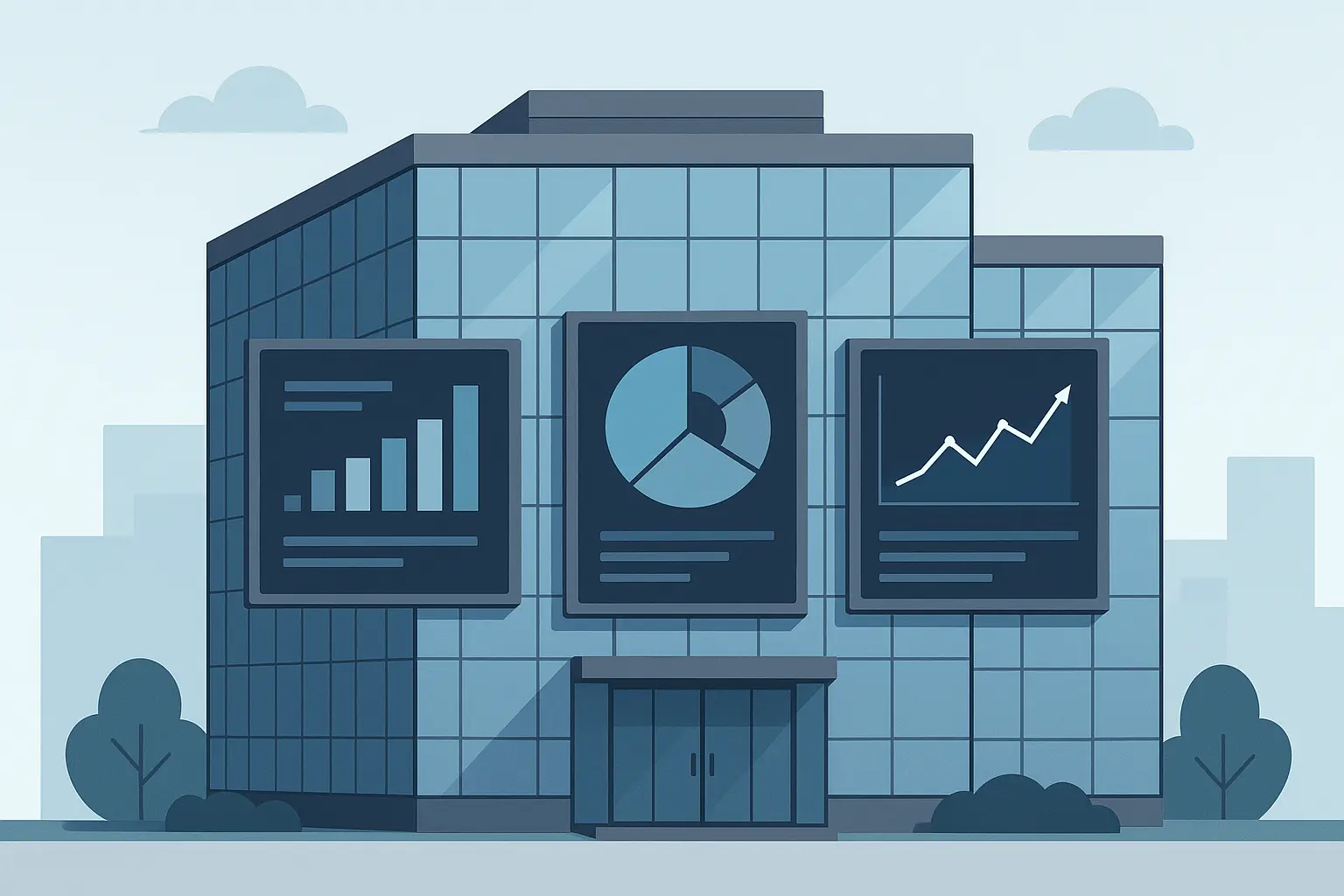
Back in 1962, Sam Walton opened a single discount store in Arkansas. Fast forward to today, and Walmart runs over 11,000 physical stores across 28 countries pulling in more than $611 billion annually. That’s not just growth – that’s a complete reinvention of what retail can be.
Look, I’ve seen plenty of companies try to go digital and fall flat on their faces. But Walmart? They actually pulled it off, and honestly, it’s pretty impressive when you dig into how they did it. They didn’t just slap some technology onto their existing business and call it a day. They completely rethought how retail could work when the internet changed everything.
Going Digital Without Losing Their Soul
CEO Mike Duke saw this coming back in 2009. He knew they couldn’t just keep being the supply chain kings forever – they needed to get experimental, more flexible, basically more like a startup (which is wild when you think about a company that size). By 2010, they’d pulled all their online stuff together into one Global eCommerce Division with three simple goals: figure out a global online strategy, grow their web sales fast, and build tech platforms for every Walmart market.
Here’s the thing most people miss about Walmart – having a store practically on every corner isn’t just convenient for shoppers. 90% of Americans live within 10 miles of a Walmart store, which turned out to be their secret weapon against Amazon. While Amazon was building warehouses, Walmart already had thousands of mini-distribution centers disguised as stores.
The tricky part was balancing massive tech investments with their famous “everyday low prices” promise. Understanding retail math and pricing strategies becomes crucial when you’re trying to spend billions on technology while keeping prices low enough that customers don’t jump ship.
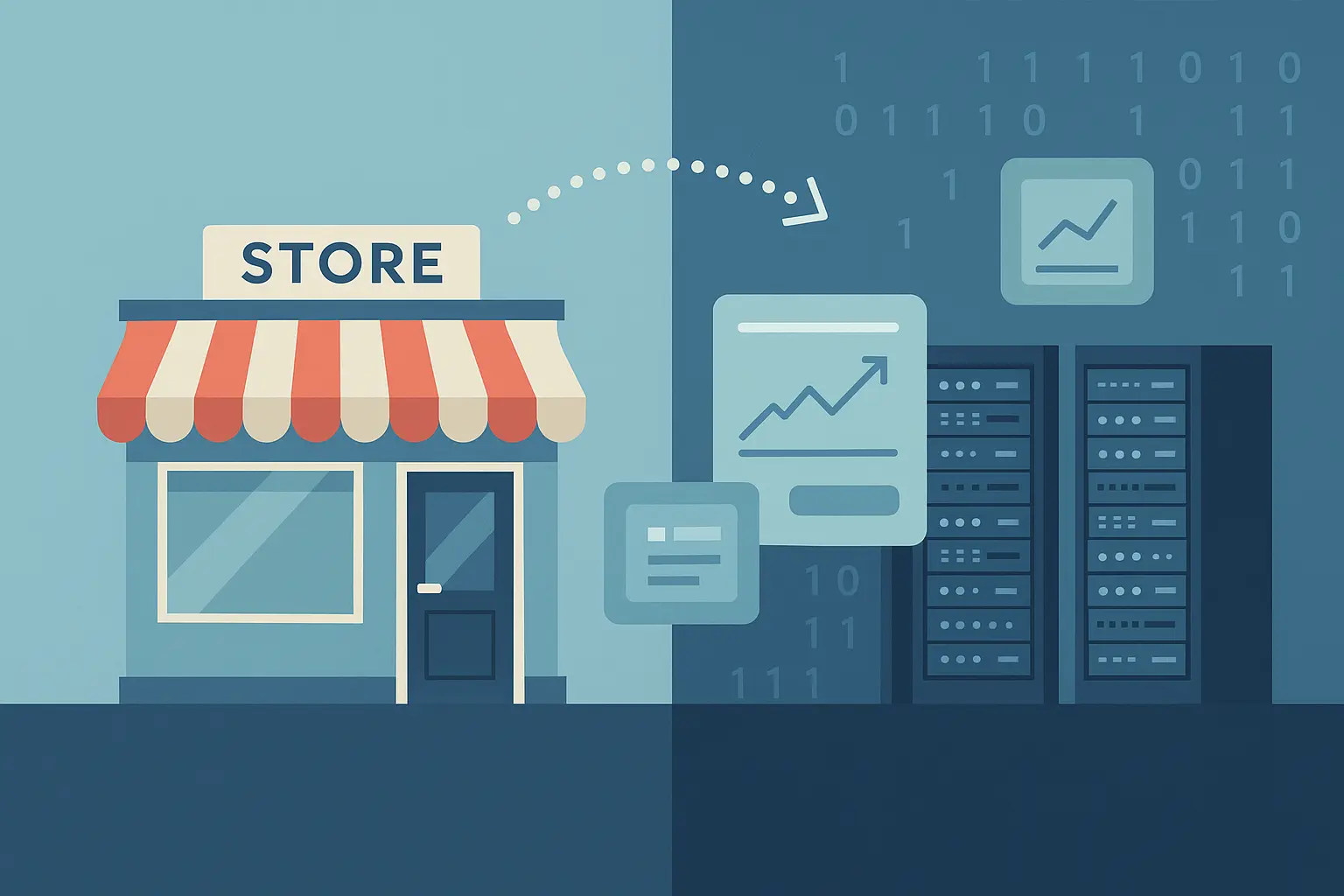
The Blockchain Thing That Actually Worked
You know how everyone talks about blockchain but most companies never actually do anything useful with it? Walmart’s different. They partnered with IBM and built something that actually matters – a system that can trace contaminated food in seconds instead of weeks.
The company’s experience will be published as a Harvard Business School case study showing how smart operational moves have boosted both employee retention and stock performance over the past decade.
When Seconds Actually Matter More Than Weeks
Before blockchain, if there was an E. coli outbreak in romaine lettuce, Walmart had to play detective for weeks trying to figure out which farms were the problem. Meanwhile, they’d pull ALL the romaine from every store just to be safe. Now? They can pinpoint the exact source in 2.2 seconds.
Think about it this way – when contaminated spinach showed up in their supply chain, the blockchain system immediately traced it back to the specific farm, processing facility, and distribution center. Instead of throwing out millions of dollars worth of perfectly good spinach, they only removed the bad stuff. Customers stayed safe, and Walmart didn’t lose their shirts on unnecessary waste.
The system tracks every single step of a product’s journey. It’s like having a GPS tracker for your food, except it also knows where it’s been, who handled it, and when something went wrong.
Smart Shelves and Robots That Actually Help
Managing inventory across 10,000+ stores is basically impossible without serious tech help. Walmart figured this out with IoT sensors, RFID tags, and predictive analytics that can guess what you’ll want to buy before you know it yourself.
The results are pretty impressive. Customers find what they’re looking for way more often, and those annoying “out of stock” situations happen a lot less.
|
Technology |
When They Started |
What It Does |
How Much Better It Got |
|---|---|---|---|
|
IoT Sensors |
2018-2020 |
Watches stock levels in real-time |
15% fewer empty shelves |
|
RFID Technology |
2019-2021 |
Automatically tracks inventory |
25% faster restocking |
|
Predictive Analytics |
2020-2022 |
Predicts what people will buy |
20% less stuff sitting in storage |
|
AI-Powered Ordering |
2021-2023 |
Orders stuff automatically |
30% better at having what you want |
Making Suppliers Part of the Team
Instead of the old-school phone calls and fax machines (yes, retail used to run on fax machines), Walmart digitized everything. Suppliers can see real-time demand data, plan their production better, and respond faster when things change.
This isn’t just about efficiency – though that matters. When suppliers can see exactly what’s selling and what’s not, they can make smarter decisions about what to produce. Everyone wins: suppliers waste less money on stuff nobody wants, and customers find what they need more often.

Building an Online Empire (While Keeping the Stores)
Walmart didn’t just add a website and call themselves digital. They rebuilt the entire customer experience so shopping online and in-store feels like one seamless thing. And it’s working – Walmart’s e-commerce platform generated $105 billion in 2023, a 12% increase from 2022.
Buying Their Way to Success
Sometimes you build, sometimes you buy. Walmart chose to acquire companies when it made sense. Jet.com brought them e-commerce expertise and city customers who’d never set foot in a Walmart. The acquisition of Flipkart for $16 billion secured Walmart a 77% stake in India’s leading online retailer – basically buying their way into one of the world’s biggest markets.
These weren’t random shopping sprees. Each purchase filled a specific gap in their capabilities.
Taking on Amazon Prime (And Actually Competing)
Creating Walmart+ to compete with Amazon Prime took some serious guts. But here’s the genius part – they didn’t just copy Prime. They used their physical stores as an advantage.
Sure, you get free delivery and exclusive deals like Prime. But you also get fuel discounts at gas stations and same-day grocery pickup. Amazon can’t match that because they don’t have gas stations or grocery stores on every corner.
A typical Walmart+ member saves about $1,300 a year just on fuel discounts, plus they get unlimited free delivery on orders over $35. When you add in exclusive early access to deals and free grocery pickup, it’s a membership experience that actually uses Walmart’s physical presence instead of fighting against it.
Turning Stores into Shipping Centers
This might be the smartest thing they did. Instead of building new warehouses like Amazon, Walmart turned their existing stores into fulfillment centers. Need groceries? Order online and pick them up without leaving your car. Want something delivered? It’s probably coming from the store down the street, not some warehouse three states away.
This solved the “last mile” delivery problem that kills most online retailers. When your “warehouse” is already in every neighborhood, getting stuff to customers becomes way easier and cheaper.
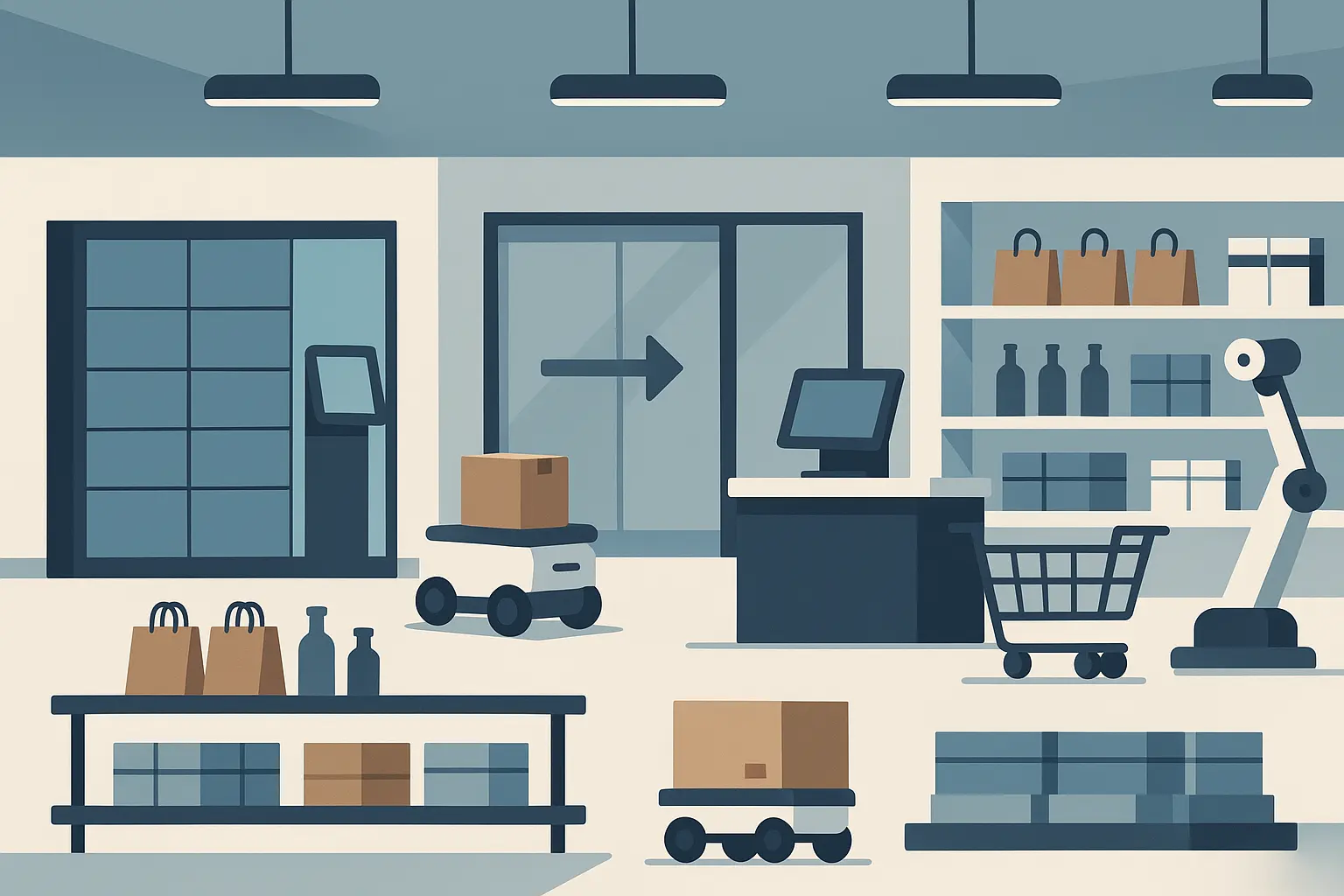
David vs. Goliath (Except David Has 4,700 Stores)
Competing with Amazon isn’t just about price – it’s about using those physical stores as an advantage while building digital convenience that matches what Amazon offers.
Building Their Own Marketplace
Amazon makes tons of money letting other companies sell on their platform. Walmart built their own version, but with stricter quality standards and better integration with physical stores.
The key difference? Walmart’s marketplace sellers can also sell in actual stores, creating opportunities Amazon simply can’t match. This gives sellers access to both online shoppers and people walking through the aisles.
Every Store is Now a Mini-Warehouse
Using stores as fulfillment centers, setting up micro-fulfillment centers, and innovating last-mile delivery created a network that actually competes on speed and convenience.
This turns Walmart’s biggest asset – all those physical locations – into something Amazon can’t easily copy. Orders get fulfilled from the nearest store, which means faster delivery, lower costs, and happier customers.
Marketing That Actually Knows You
The success of data-driven marketing really comes down to calculating and optimizing marketing ROI to make sure every dollar spent actually brings back more than you put in.
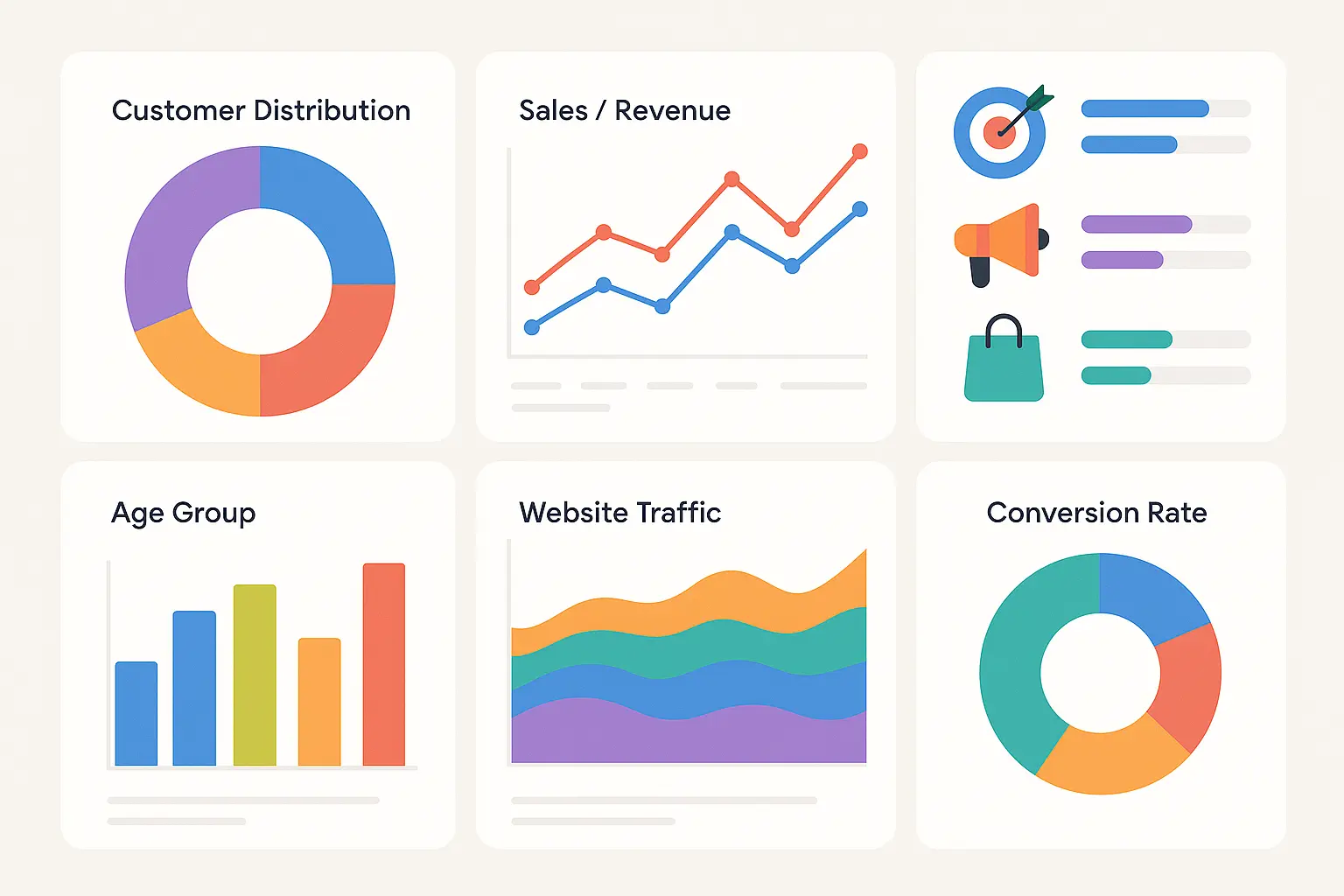
Making 265 Million Customers Feel Special
Personalizing experiences for hundreds of millions of customers isn’t easy. Walmart built analytics and machine learning systems that create targeted promotions and predict what you’ll want with scary accuracy.
Their advertising tech keeps getting better too. Recent case studies show revenue doubling year over year and a 67% increase in ROAS compared to the prior year’s campaign through their Walmart Connect platform.
Understanding success means tracking return on ad spend (ROAS) to see which campaigns actually work and which ones are just burning money.
Going Beyond Age and Income
Most companies segment customers by age, income, and location. Walmart goes way deeper – they look at purchase history, shopping patterns, and preferences to create campaigns that actually work.
A customer who buys organic produce and premium brands gets different messages than someone focused on the lowest prices. The system adapts automatically.
Here’s a cool example: Walmart’s ‘Polaris’ search engine is smart enough to understand context. When a customer who regularly buys movies searches for “I love Salt,” it knows they probably mean the Hollywood movie ‘Salt,’ not table salt. So instead of showing them condiments, it shows entertainment products. That kind of understanding improved their conversion rates significantly.
Tracking the Messy Reality of How People Shop
Customers don’t shop in straight lines. They research online, visit stores, check mobile apps, and buy stuff across multiple channels. Walmart’s system tracks these complex journeys.
This visibility completely changes marketing decisions. Instead of guessing which channels work, they know exactly how customers move through their world. The data shows which touchpoints actually drive sales and which ones need work.
Turning Customer Data into Cash
Walmart Connect (used to be called Walmart Media Group) is brilliant – they’re making money from their customer data and store traffic by creating advertising opportunities for suppliers and brands.
Advertising That Doesn’t Suck
Suppliers can promote products within Walmart’s digital world, which generates revenue while helping customers discover products. The beauty is in the relevance – customers see products they’re already interested in, suppliers reach qualified buyers, and Walmart makes advertising money.
When someone searches for laundry detergent, the sponsored results show relevant options they might not have considered. It feels helpful rather than annoying.
Bridging the Online-Offline Gap
Digital advertising displays, interactive kiosks, and mobile app notifications create advertising experiences that connect online and offline shopping.
This creates advertising opportunities that pure online platforms can’t offer. Physical presence becomes an advertising advantage, letting brands reach customers right when they’re making purchase decisions.
|
Marketing Innovation |
When It Launched |
What It Does |
How It Helped Business |
|---|---|---|---|
|
Shopycat Social Gift Finder |
2012 |
Uses Facebook data for gift suggestions |
Better social commerce engagement |
|
Polaris Search Engine |
2014 |
Smart search that understands context |
10-15% better conversion rates |
|
Walmart Connect DSP |
2019 |
First-party data targeting |
Partner campaign revenue doubled |
|
Mobile App Personalization |
2020 |
AI-driven recommendations |
30% more app engagement |
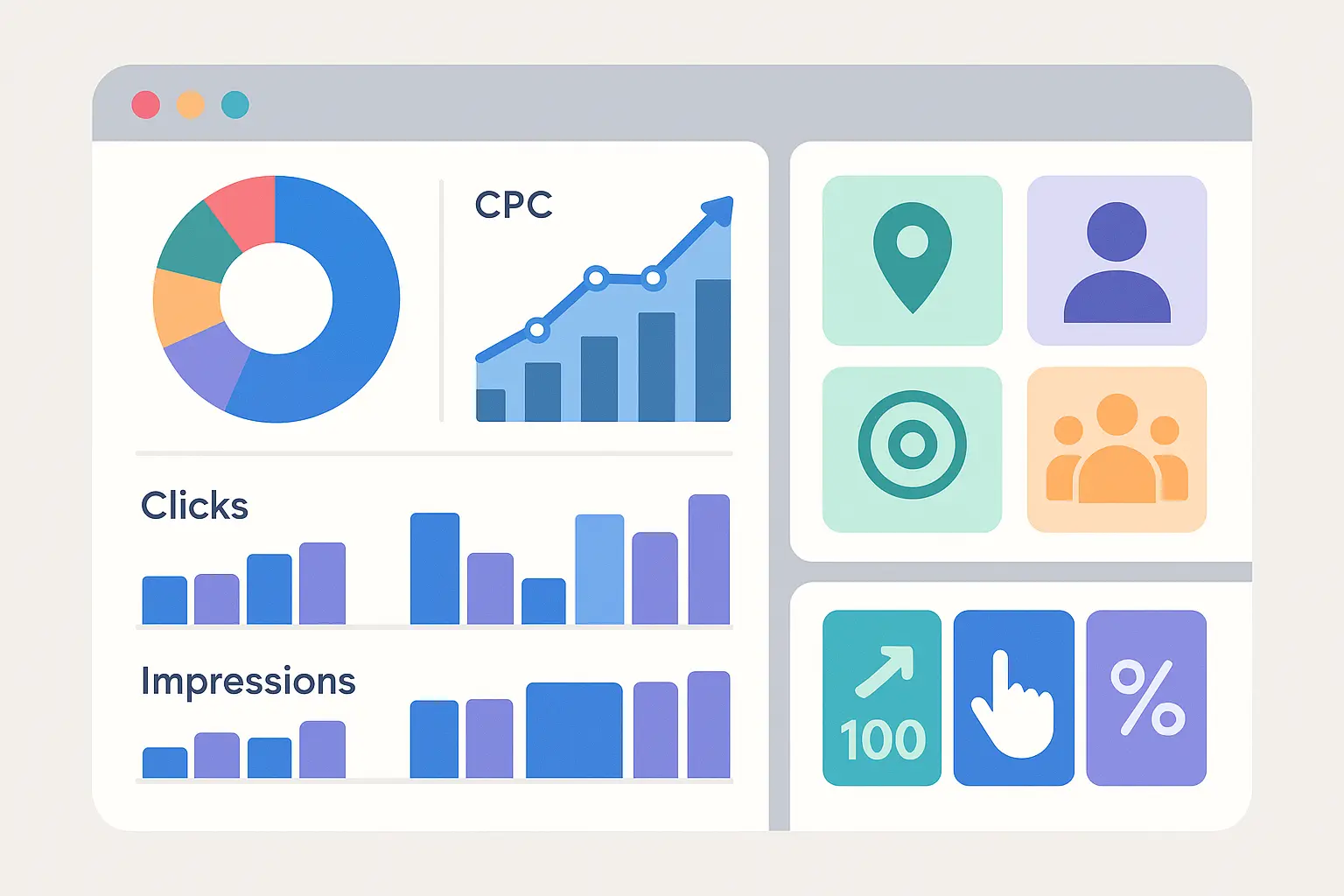
Keeping Costs Low While Going High-Tech
Robots Join the Team (But Don’t Replace Everyone)
Walmart rolled out robotics across distribution centers, stores, and fulfillment operations. This wasn’t about firing people – it was about cutting costs, improving accuracy, and getting faster.
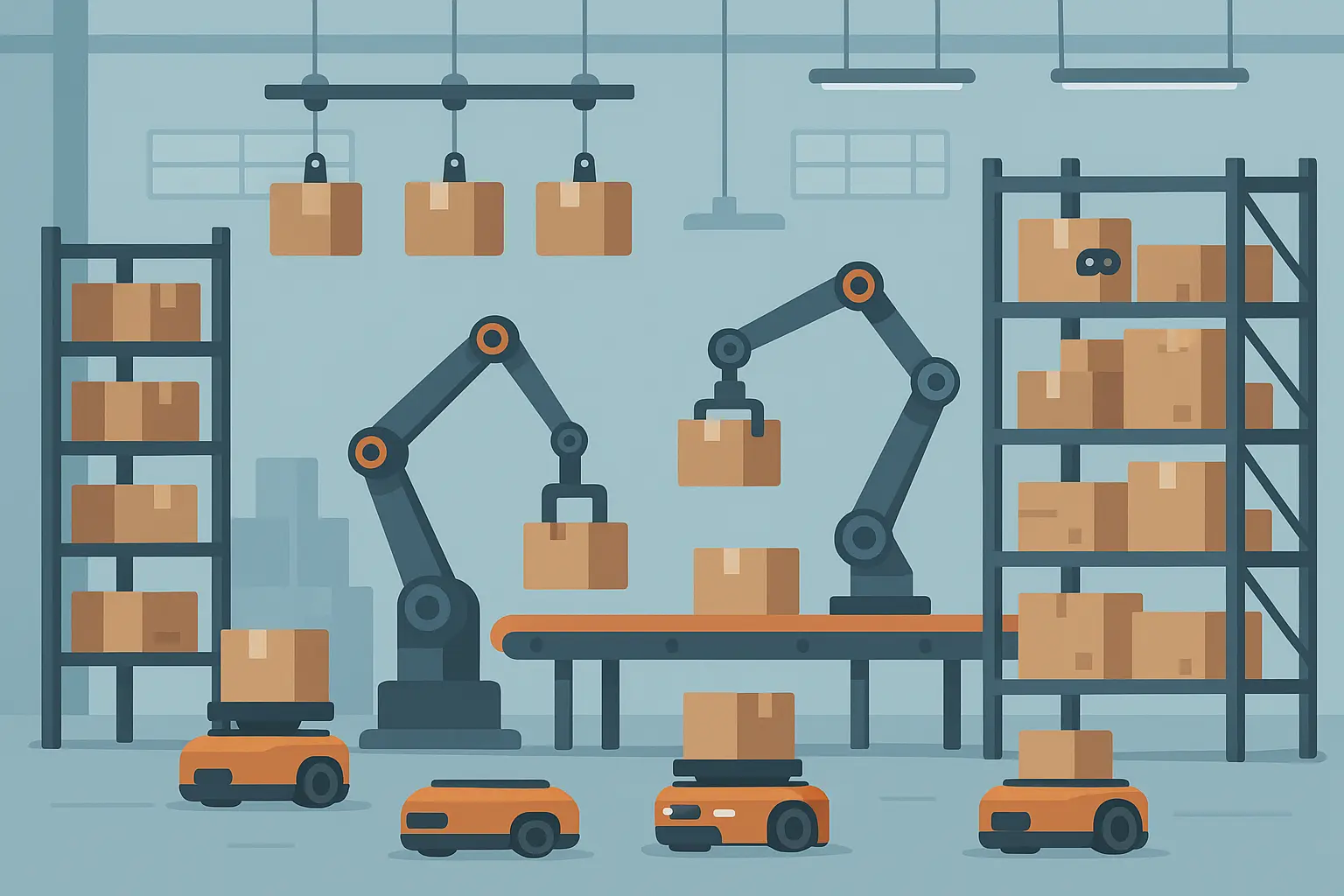
Distribution Centers Get a Makeover
Automated sorting systems, robotic picking, and AI-powered inventory management turned distribution centers into highly efficient operations that process massive volumes with way fewer mistakes.
The results are impressive. Processing times went down, accuracy went up, and costs dropped – all while handling more stuff. Workers could focus on complex tasks while robots handled the repetitive sorting and moving.
Robots in the Aisles
Shelf-scanning robots, automated inventory tracking, and self-checkout technologies make operations more efficient while improving the customer experience.
These robots free up employees for customer service while making sure shelves stay stocked and prices stay accurate. The robots work overnight, scanning shelves and finding out-of-stock items or pricing errors that need fixing.
Going Green (Because It Actually Saves Money)
Walmart integrated sustainability into core operations through renewable energy , waste reduction, and sustainable sourcing practices that create both environmental and economic value.
Project Gigaton: One Billion Tons of Carbon Gone
Walmart’s plan to eliminate one gigaton of carbon emissions from their supply chain by 2030 works with suppliers to implement sustainable practices and technologies.
This isn’t just good PR – it’s good business. Sustainable practices often reduce costs while improving efficiency and brand reputation. Suppliers who participate often discover that reducing waste and energy consumption directly helps their bottom line.

What the Rest of Us Can Actually Learn From This
When you’re evaluating business opportunities, understanding market sizing methodologies helps you figure out where to invest resources and how to prioritize transformation initiatives.
Why Their Digital Transformation Actually Worked
Walmart’s success wasn’t accidental. Specific things made it work, and these lessons apply to businesses of all sizes.
Changing How 2.3 Million People Work
Managing a cultural shift from traditional retail to tech-driven processes while keeping core values and standards required careful planning and execution.
The key was gradual rollouts with extensive training and clear communication about how technology would make jobs easier, not obsolete. Associates learned that robots and automation made their work better, not unnecessary.
Here’s what actually matters for digital transformation:
-
Get clear leadership vision and commitment
-
Invest heavily in employee training
-
Roll out technology gradually with pilot programs
-
Keep your core company values throughout
-
Create feedback loops for continuous improvement
-
Develop solid change management communication
-
Track transformation metrics regularly
Build, Buy, or Partner?
Walmart’s approach to technology investments included smart build-versus-buy decisions and partnership strategies.
They built core capabilities internally, bought specialized companies, and partnered with tech leaders . Each decision served specific strategic goals. Building gave them control, buying provided speed, and partnerships offered expertise without massive capital investments.
The Next Big Thing: AI and Beyond
Walmart’s current and planned AI applications span demand forecasting, customer service automation, and supply chain optimization.
As businesses increasingly adopt AI, understanding how to create continuously learning AI systems becomes essential for maintaining competitive advantages and optimizing performance.
AI Integration: What’s Coming Next
AI applications across operations create opportunities for better forecasting, automated customer service, and optimized supply chain management in real-time.
The potential is huge. AI can predict demand more accurately, handle routine customer questions automatically, and optimize complex supply chain decisions instantly. Walmart’s already testing AI chatbots for customer service and using machine learning to optimize inventory levels.
Here’s how to think about AI implementation:
-
Figure out what’s broken: Identify current problems and AI opportunities
-
Start small: Begin with small-scale AI pilots
-
Get your data house in order: Make sure you have solid data collection and management
-
Make it work together: Integrate AI seamlessly with existing systems
-
Watch the numbers: Track AI effectiveness and ROI
-
Scale what works: Expand successful AI applications across operations
-
Keep learning: Refine AI models based on performance data
What challenges is your business facing with going digital? The lessons from this Walmart case study might provide the roadmap you need.
If you’re struggling with data-driven marketing strategies or need help optimizing your digital presence, The Marketing Agency specializes in helping businesses achieve measurable results through comprehensive inbound marketing strategies and performance-focused campaigns. We can help you develop the foundational marketing infrastructure needed to support growth and build sustainable competitive advantages.
For businesses looking to optimize their digital marketing performance, leveraging advanced analytics for strategic growth provides the data-driven insights necessary to make informed decisions and maximize return on investment across all marketing channels.
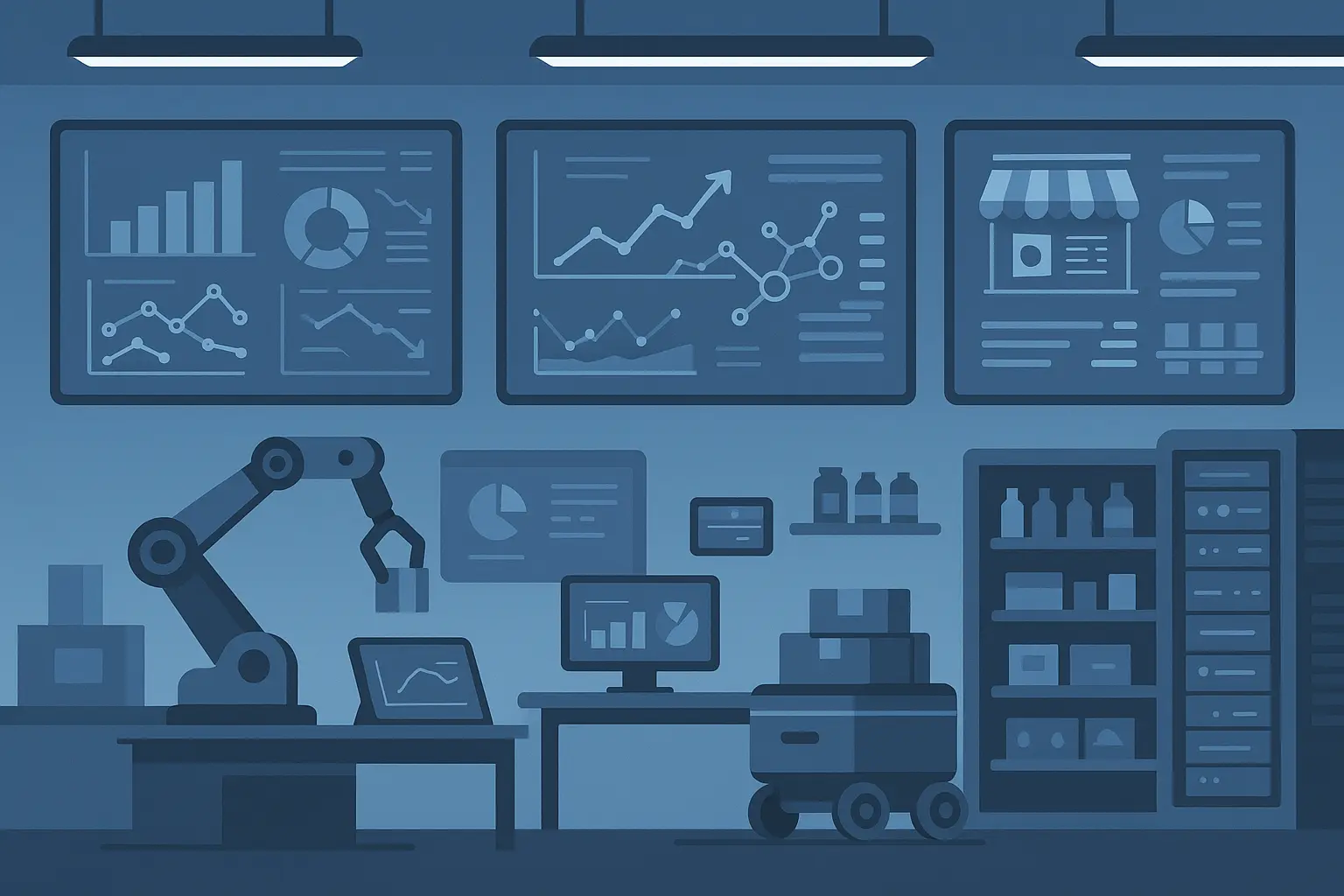
The Bottom Line
Walmart’s transformation from traditional retailer to digital competitor proves that even the biggest, most established companies can reinvent themselves when they really commit to change. Their success wasn’t built on one brilliant innovation – it took coordinated efforts across supply chain tech, customer experience, operational efficiency, and strategic positioning.
The most valuable lesson? Digital transformation isn’t just about technology – it’s about fundamentally rethinking how you serve customers while keeping what made you successful in the first place. Walmart kept their cost leadership advantage while building digital capabilities that actually rival Amazon’s convenience.
Their blockchain work with IBM Food Trust shows how emerging technologies can solve real business problems instead of just creating buzzword-heavy presentations. When you can trace contaminated food in seconds instead of weeks, that’s customer safety and business protection rolled into one solution.
The omnichannel strategy reveals something crucial: your existing assets might be your biggest competitive advantage if you use them creatively. Walmart turned 4,700 stores into fulfillment centers, creating a delivery network Amazon can’t easily copy. Sometimes the best digital strategy uses your physical presence instead of abandoning it.
What strikes me most about their approach is the focus on measurable results. Every initiative – from Walmart+ to automation deployment – gets evaluated on concrete metrics. They don’t implement technology for its own sake; they solve specific problems and track the outcomes.
For businesses watching from the sidelines, this Walmart case study offers hope and a roadmap. You don’t need to be a tech company to succeed in a digital world. You need to understand your customers, use your unique advantages, and commit to continuous improvement. The size of your transformation matters less than the consistency of your execution.
Honestly, that’s probably the future for most businesses – not abandoning what made you successful, but finding smart ways to blend old and new. Walmart figured out that you don’t have to choose between being a tech company or a traditional retailer. You can be both.



